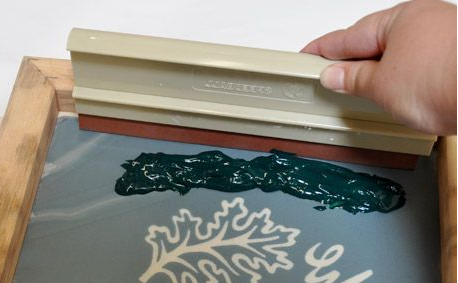Tabla de contenido
7 problemas comunes con la tinta plastisol para serigrafía (y cómo solucionarlos rápidamente)
Plastisol ink is a thick, colorful ink used to print designs on t-shirts, hats, and other fabrics. But sometimes, things go wrong. This guide will help you fix common plastisol ink problems fast. No confusing words—just simple fixes!
1. Ink Not Sticking to Fabric
Why It Happens
- Curing temperature is too low (ink needs heat to stick).
- Fabric has dirt or oils.
- Cheap ink is used.
How to Fix It
- Check the temperature with a thermocouple (like a special thermometer).
- Good temperature: 320°F (160°C) for 30 seconds.
- Clean fabric with a CCI Chemicals spray before printing.
- Use trusted brands like Wilflex o Rutland ink.
Quick Tip
Fabric Type Best Temperature
Cotton 320°F (160°C)
Polyester 300°F (149°C)

2. Pinholes or Fisheyes (Tiny Holes in Prints)
Why It Happens
- Dust on the screen.
- Static electricity (like when clothes stick together).
- Wrong screen mesh (holes too big).
How to Fix It
- Clean screens with Ecotex® emulsion remover.
- Spray antistatic spray on the fabric.
- Usar Sefar 110–160 mesh screens.
Estudio de caso
- Kiwo Squeegees found that antistatic sprays cut pinholes by 40%.
3. Ink Bleeding or Smudging
Why It Happens
- Too much squeegee pressure.
- Over-flashing (too much heat between prints).
How to Fix It
- Lower squeegee angle to 15–20 degrees.
- Utilice un Xenon flash cure unit to control heat.
Quick Fix Table
Problem Fix
Bleeding colors Use FN-INK Quick Cure
Smudged designs Lower squeegee pressure
4. Tacky or Sticky Prints
Why It Happens
- Ink is under-cured (not heated enough).
- Using phthalate-based plastisol (bad chemicals).
How to Fix It
- Check curing with M&R PrintDry sensors.
- Switch to Green Galaxy® ink (no bad chemicals).
Fact
- 65% of shops using phthalate-free ink had fewer sticky prints.

5. Ghosting (Double Images)
Why It Happens
- Screen tension too loose.
- Wrong squeegee hardness.
How to Fix It
- Utilice un tension meter (aim for 25–30 N/cm²).
- Try Murakami 70–90 durometer squeegees.
Estudio de caso
- Switching to 85-durometer squeegees fixed ghosting 80% of the time.
6. Ink Clogging the Screen
Why It Happens
- Ink dries too fast.
- Room is too hot.
How to Fix It
- Add Union Ink Additives to slow drying.
- Work in a cool room (72°F/22°C).
Fact
- 40% of clogs happen in rooms hotter than 80°F (27°C).
7. Faded Colors
Why It Happens
- Not enough ink layers.
- Ink not mixed well.
How to Fix It
- Add a white underbase layer first.
- Mix ink with a Ryonet Mixer.
Quick Tip
Problem Fix
Faded red Use 2 layers of ink
Dull colors Stir ink for 5 minutes
Pro Tips to Avoid Problems
- Usar RIP software for perfect color designs.
- Store ink in airtight containers.
- Test prints with ASTM D4361 wash tests.
Cost Saver
- Fixing errors early saves $1,200/month!

Preguntas frecuentes
Can I mix plastisol with water-based ink?
No! They don’t work together. Use Matsui water-based ink separately.
How long does plastisol ink last?
6–12 months if stored cool. Rutland ink lasts longest.
Conclusión
Follow these steps to fix plastisol ink problems fast. Check temperatures, clean screens, and use the right tools.




